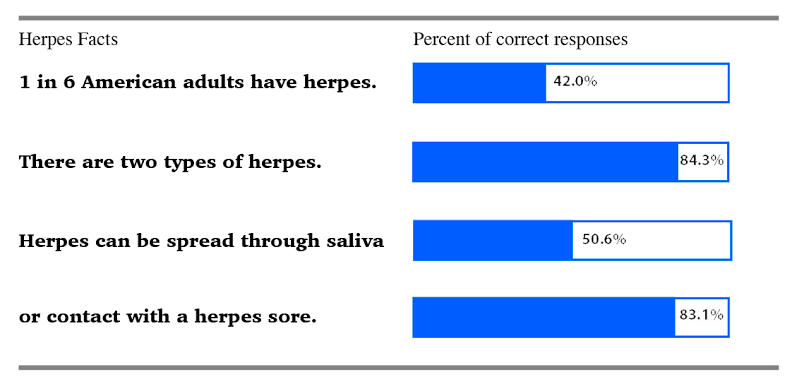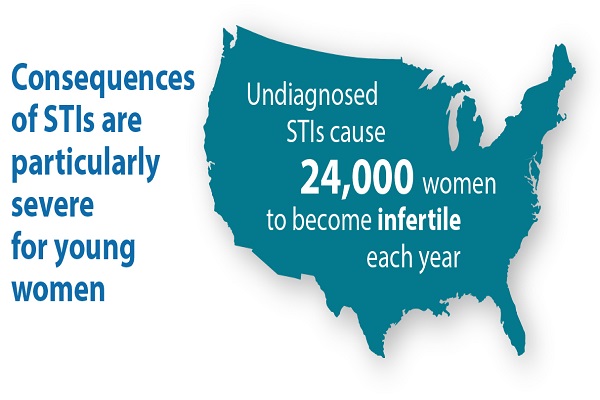It is challenging for herpes single to understand herpes and its mental, physical and emotional consequences. If you are one of those who still don’t feel like discussing herpes, then this article is just for you. In this in-depth guide, we’ll explore key herpes facts that everyone should know, covering various aspects of herpes, their management, and their impact on dating and relationships.
Herpes symptoms can be painful, and the sores or medical conditions can worsen without proper care. Hence, it is essential to discuss herpes with your doctor, family, and friends. Do not shy away. People who love you would never care less for you because you have a medical condition. So spread your wings and live your life king-size.

Herpes facts that will help you cope with it – Emotionally and Mentally
Herpes is far from a rare condition; it’s pervasive globally. Whether we’re conscious of it or not, this virus has touched the lives of countless individuals. The World Health Organization (WHO) estimates that approximately 3.7 billion people—about two-thirds of the global population under 50—carry the herpes simplex virus type 1 (HSV-1), primarily associated with oral herpes. Meanwhile, about 491 million people aged 15-49 have genital herpes, mainly caused by HSV-2. These numbers vividly depict herpes’s prevalence but underscore the need for accurate information and understanding.
- $16 Billion is invested in treating STIs across the US every year. So investing in your health, especially when you have herpes, should not scare you.
- Estimates suggest that between 50% to 80% of American adults in the United States are infected with herpes simplex virus type 1 (HSV-1), commonly called oral herpes. This viral strain causes cold sores or fever blisters in or around the mouth.
- 72% of the people suffering from herpes do not notice the early signs. So stop blaming yourself for knowing late.
- 43% of people feel mentally stressed when they get to know that they have herpes. So being worried or stressed is normal for some time. However, do not get into depression. Talk to your doctor, friends, and family.
- 82% of people feel that their sex life would end with herpes. This is just a myth. Talk to your partner and doctor about this.
Herpes symptoms and herpes outbreaks can never stop you from being what you truly want to be. You deserve a life full of happiness and fulfilment.
Understanding Herpes Prevalence Globally
Herpes Simplex Virus 1 (HSV-1): Globally, an astounding 67% of the population under 50, approximately 3.7 billion people, is estimated to be infected with HSV-1. This virus is primarily associated with oral herpes and cold sores. What’s particularly notable about HSV-1 is its frequent transmission during childhood, often through non-sexual means.
Herpes Simplex Virus 2 (HSV-2): On a global scale, approximately 13% of the population under 50, or roughly 491 million individuals, are affected by HSV-2. Sexual contact primarily transmits this strain of the virus, linking it to genital herpes and making it one of the most common sexually transmitted infections (STIs) worldwide.
HSV-1 Infection Prevalence in Europe (2016)
Understanding the global prevalence and incidence of herpes simplex virus (HSV) infections is essential to grasp the scope of this viral phenomenon. Mathematical modelling has provided valuable insights into the prevalence of HSV-2 and HSV-1 infections in Europe in 2016, revealing significant numbers that warrant attention.
- Females: The modelling also revealed that 60.6% of European females aged 0 to 49 years were infected with HSV-1. This viral strain frequently causes oral herpes or cold sores. Approximately 40.1% of males aged 0 to 49 have the HSV-1 infection.
Herpes Prevalence in Asia: A Changing Landscape
Herpes simplex virus (HSV) infections, particularly HSV-2, are not only familiar but also evolving in prevalence in Asia. Here, we explore the prevalence of HSV-2 in Asia and the changing dynamics of this viral infection in the region.
HSV-2 Infection Prevalence in Asia
- Overall Prevalence: In Asia, approximately 12% of the population is estimated to be infected with HSV-2. This viral strain primarily causes genital herpes, and its prevalence highlights its impact on sexual health in the region.
- Prevalence Decline: Notably, the prevalence of HSV-2 infection in Asia is declining by 2% per year. This decline reflects changing trends in sexual behaviour, increased awareness, and access to healthcare.
Genital Ulcer Disease and Genital Herpes in Asia
- Genital Ulcer Disease (GUD): HSV-2 plays a significant role in causing genital ulcer disease (GUD) cases in Asia. An estimated 48% of GUD cases in the region can be attributed to HSV-2 infection. GUD can have a substantial impact on sexual health and can lead to complications if left untreated.
- Genital Herpes: HSV-2 primarily contributes to genital herpes cases in Asia. Approximately 76% of genital herpes cases in the region are caused by HSV-2 infection. Genital herpes can have physical, emotional, and psychosocial consequences for affected individuals.
Herpes Prevalence in Germany
In Germany, approximately 10 to 15 percent of the population are carriers of herpes simplex virus type 2 (HSV-2), which is primarily responsible for genital herpes. Among these carriers, approximately 10 to 30 percent are symptomatic, meaning they experience noticeable symptoms of genital herpes. Women are affected by genital herpes slightly more often than men. These statistics provide insights into the prevalence of genital herpes in Germany and the proportion of individuals who experience symptoms related to this viral infection.
Herpes Prevalence in Britain
In the United Kingdom (UK), the prevalence of herpes simplex virus (HSV) infections varies by type:
- HSV-1 (Oral Herpes): Approximately 70% of the UK population is affected by HSV-1, often called a cold sore. HSV-1 primarily causes oral herpes, manifesting as cold sores or fever blisters around the mouth.
- HSV-2 (Genital Herpes): The HSV-2 virus, responsible for genital herpes, affects approximately 23% of adults in the UK.
These statistics provide an understanding of the prevalence of both oral and genital herpes in the UK. Recognizing these are common viral infections is essential, and awareness and education are crucial for managing and reducing transmission rates.
Herpes Prevalence in Japan
In Japan, the seroprevalence of herpes simplex virus (HSV) infections varies between HSV-1 and HSV-2 and across genders:
- HSV-1 (Oral Herpes):
-
- Among men, the seroprevalence of HSV-1 is approximately 55.4%.
- Among women, the seroprevalence of HSV-1 is higher, at about 63.3%.
- HSV-2 (Genital Herpes):
-
- Among men, the seroprevalence of HSV-2 is about 7.4%.
- Among women, the seroprevalence of HSV-2 is higher, at about 9.3%.
These statistics provide insights into the prevalence of HSV-1 and HSV-2 infections in Japan’s general population. As with other regions, awareness, education, and responsible sexual behaviour are essential for managing and reducing the transmission of herpes in Japan.
Herpes Prevalence in China
Various studies estimate that in mainland China, the prevalence of herpes simplex virus type 2 (HSV-2) among men who have sex with men (MSM) ranges from 0.011 to 0.247. Most of these estimates fall between 0.05 and 0.15.
The random-effects pooled prevalence of HSV-2 among MSM in mainland China was approximately 0.094 (or 9.4%) with a 95% confidence interval of 0.074 to 0.116. The 31 studies included in this analysis showed high heterogeneity (variability), with an I2 value of 96.2%. This increased heterogeneity suggests significant differences in the prevalence estimates across the studies.
These statistics specifically pertain to the prevalence of HSV-2 among MSM in mainland China and may not reflect the overall prevalence of herpes infections in the entire Chinese population. Also, prevalence rates may vary among different population groups and regions in China.
Herpes Prevalence in Australia
In Australia, genital herpes is indeed a common sexually transmitted infection. The prevalence estimates suggest:
- It is estimated that approximately 1 in 8 Australians have genital herpes.
- Around 85% of people in Australia carry herpes simplex virus type 1 (HSV-1).
- About 20% of the population in Australia carries herpes simplex virus type 2 (HSV-2).
HSV-1 often causes oral herpes (cold sores) but can also transmit genital herpes through oral-genital contact. HSV-2 mainly causes genital herpes.
These statistics highlight the significant impact of herpes infections in Australia and underscore the importance of awareness, testing, and responsible sexual behaviour to reduce transmission rates and manage the condition effectively. Additionally, genital herpes is higher in adult women, particularly in the age group of 35-44 years, compared to adult men.
Herpes Prevalence in Denmark
In Denmark, herpes simplex virus (HSV) infections, including both HSV-1 and HSV-2, are relatively common. Here are some key statistics regarding the prevalence of herpes in Denmark:
- Approximately 80% of adult Danes carry antibodies against the herpes simplex virus, indicating they have been exposed to it at some point.
- Genital Herpes (HSV-2): Studies have shown that approximately 1 in 5 (or 20%) of all adults in Denmark are infected with genital herpes, primarily caused by HSV-2. It’s important to note that many individuals with genital herpes may be unaware of their infection because they either have no symptoms or experience only mild symptoms.
These statistics underscore that herpes infections, both oral and genital, are relatively common in Denmark. As in many other regions, many individuals may carry the virus without awareness. Awareness, education, and regular testing are crucial for managing and reducing the transmission of herpes infections in Denmark.
Herpes Prevalence in Hong Kong
In Hong Kong, herpes simplex virus (HSV) infections are relatively common, with the following prevalence statistics:
- HSV-1 (Oral Herpes): The seroprevalence of HSV-1 in Hong Kong is high. By age 24, 80-90% of the population has been exposed to HSV-1, indicating widespread exposure.
- HSV-2 (Genital Herpes): HSV-2, which primarily causes genital herpes, is less prevalent than HSV-1 in Hong Kong. The seroprevalence of HSV-2 in the general population (age 25 and older) was approximately 17-18% using the western blot method.
These statistics suggest that HSV-1 is highly prevalent in Hong Kong, especially among young individuals, while HSV-2, which is less common, primarily affects those aged 25 and older. As with many other regions, herpes infections are a notable health concern in Hong Kong, and awareness, education, and responsible sexual behaviour are essential for managing and reducing transmission rates.
Conclusion: Empowerment and Education
Understanding the facts about herpes is a crucial step toward empowerment and informed decision-making. Herpes is a common condition that millions of people worldwide live with. While it presents challenges, it is manageable, and individuals with herpes can have healthy, happy, and fulfilling lives. By being aware, practising safe sex, and fostering open communication, you can confidently navigate dating and relationships and find the support you need to thrive.
Remember that you are not alone, and there is a vibrant and supportive community of individuals living with herpes ready to offer guidance, understanding, and encouragement on your journey.



